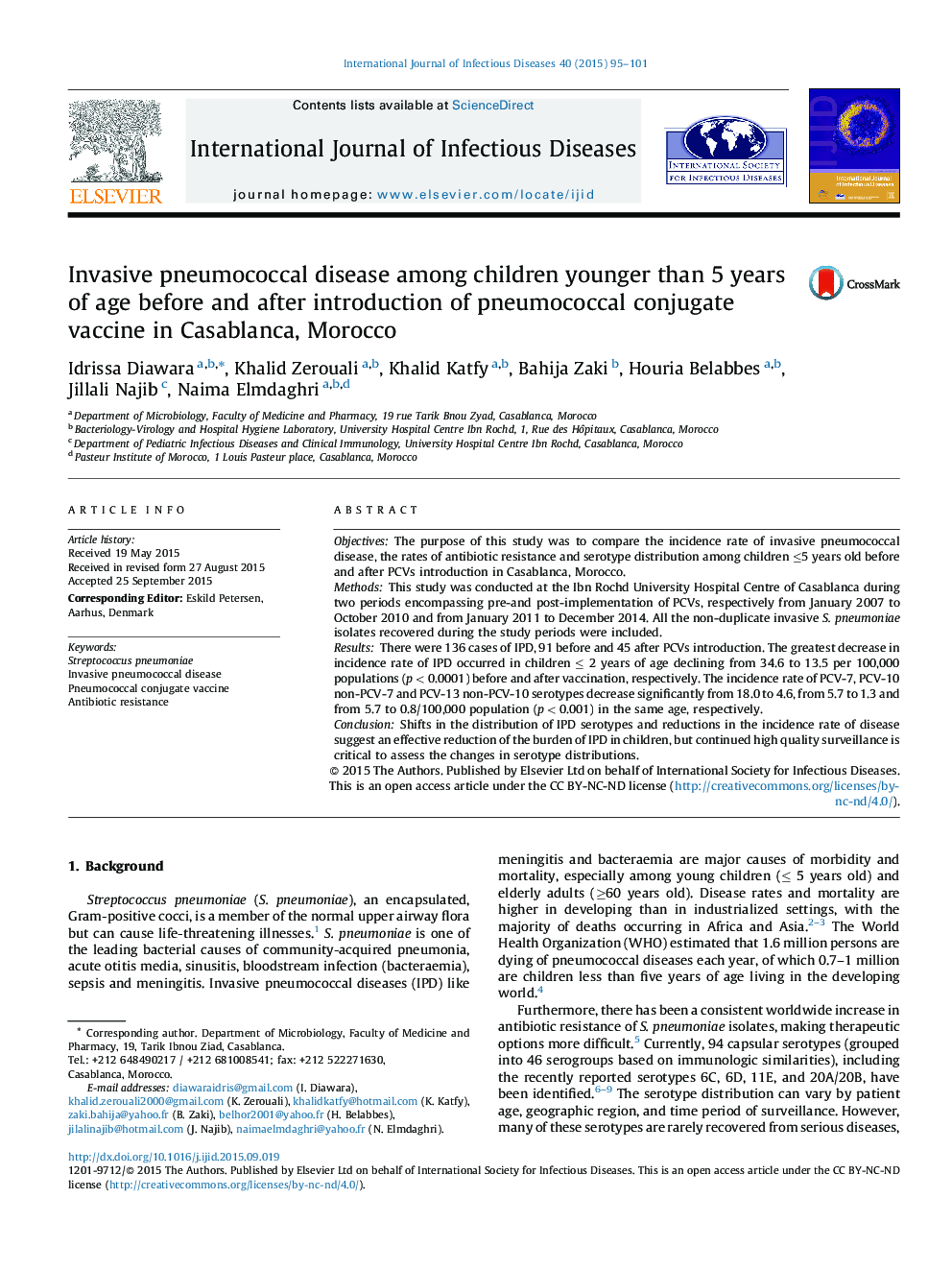| Article ID | Journal | Published Year | Pages | File Type |
|---|---|---|---|---|
| 3361964 | International Journal of Infectious Diseases | 2015 | 7 Pages |
•Streptococcus pneumoniae is a major causative agent of morbidity and mortality among young children.•In October 2010, the 13-valent pneumococcal conjugate vaccine (PCV-13) was introduced in the Moroccan National Immunization Program and replaced by the PCV-10 in July 2012.•We report the impact of pneumococcal conjugate vaccine on invasive pneumococcal disease in children under five in Morocco before and the pneumococcal vaccine implementation.•As expected, the incidence rate of IPD associated with vaccine serotype declined after vaccine implementation. The observed decline was only significant in children ≤2 years. In fact, following the introduction of PCVs in Casablanca, the incidence rate of IPD declined from 34.6 to 13.5/ 100,000 populations with a reduction of 61%. A significant reduction of penicillin and cotrimoxazole non-susceptible strains occurred in the same age.
ObjectivesThe purpose of this study was to compare the incidence rate of invasive pneumococcal disease, the rates of antibiotic resistance and serotype distribution among children ≤5 years old before and after PCVs introduction in Casablanca, Morocco.MethodsThis study was conducted at the Ibn Rochd University Hospital Centre of Casablanca during two periods encompassing pre-and post-implementation of PCVs, respectively from January 2007 to October 2010 and from January 2011 to December 2014. All the non-duplicate invasive S. pneumoniae isolates recovered during the study periods were included.ResultsThere were 136 cases of IPD, 91 before and 45 after PCVs introduction. The greatest decrease in incidence rate of IPD occurred in children ≤ 2 years of age declining from 34.6 to 13.5 per 100,000 populations (p < 0.0001) before and after vaccination, respectively. The incidence rate of PCV-7, PCV-10 non-PCV-7 and PCV-13 non-PCV-10 serotypes decrease significantly from 18.0 to 4.6, from 5.7 to 1.3 and from 5.7 to 0.8/100,000 population (p < 0.001) in the same age, respectively.ConclusionShifts in the distribution of IPD serotypes and reductions in the incidence rate of disease suggest an effective reduction of the burden of IPD in children, but continued high quality surveillance is critical to assess the changes in serotype distributions.
